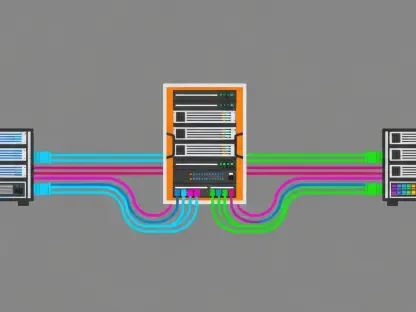In the rapidly evolving digital landscape, the question of whether AWS Security Incident Response can effectively reduce cyberattack costs embodies a significant concern for businesses worldwide. Companies are continuously grappling with the complexities of cybersecurity incidents, ranging from account takeovers and breaches to sophisticated ransomware attacks. AWS’s new service aims to address these formidable challenges by providing a more integrated and efficient incident response framework. According to an estimate by the International Monetary Fund, cyberattacks could cost more than $23 trillion globally by 2027. This staggering figure underscores the urgency of adopting more robust measures to combat cyber threats.
The new AWS service is designed to help organizations implement and scale their incident response programs more effectively, mitigating the costly consequences of cyberattacks. One of the core elements of AWS Security Incident Response is its capability to reduce recovery times significantly. By offering an integrated, single-source-of-truth approach to incident management, the service aims to streamline the often fragmented strategies deployed by companies. This streamlined approach is crucial as businesses face the daunting task of coordinating various tools, services, and personnel, often leading to inefficiencies and increased costs.
Key Features of AWS Security Incident Response
AWS Security Incident Response comes equipped with a variety of features aimed at optimizing the incident management process. A critical aspect of this new service is its automatic triaging of findings from Amazon GuardDuty and third-party cybersecurity tools. The automatic triaging capability helps in the efficient categorization and prioritization of incidents, ensuring that the most critical issues are addressed promptly. This feature alone can save invaluable time and resources, which are often wasted in manual sorting and prioritization of incidents.
Another standout feature is the service’s comprehensive dashboard. This dashboard integrates messaging and data transfer, allowing users to adjust alert settings and review incident metrics seamlessly. The integrated messaging feature ensures timely communication among team members, which is crucial during an incident. Meanwhile, the data transfer capability allows for a more fluid exchange of information, thereby reducing the likelihood of miscommunication and errors. Additionally, customers can enable proactive incident response through automated services, which use customer-specific data to sort and remediate issues or create security cases for findings that require manual intervention. This proactive approach not only improves response times but also helps in identifying potential threats before they escalate.
Support and Integration with AWS Ecosystem
What sets AWS Security Incident Response apart from other solutions in the market is the dedicated support from AWS’s customer incident response team. This team brings a wealth of expertise and experience, ensuring that users receive the highest level of support when dealing with cyber incidents. The value of having a specialized team cannot be overstated, as it adds an extra layer of reliability and assurance for businesses navigating the complexities of cybersecurity threats.
Moreover, the seamless integration with other AWS security solutions enhances the overall efficacy of the service. For companies already invested in the AWS ecosystem, this integration offers a more convenient and cohesive option for managing cybersecurity incidents. The ability to tap into a unified security infrastructure means that businesses can leverage their existing AWS investments to their fullest potential. This cohesive approach reduces the need for disparate tools and systems, thereby lowering the total cost of ownership and simplifying the incident response process.
Impact on the Global Cybersecurity Market
The launch of AWS Security Incident Response aligns with a broader trend of increasing investments in cybersecurity measures. As the scale and sophistication of cyber threats continue to grow, businesses are recognizing the need for more advanced and integrated solutions. The global incident response market reflects this trend, with projections indicating substantial growth from $21.61 billion in 2022 to $89.09 billion by 2030. This growth is driven by the mounting pressure on organizations to protect their digital assets and mitigate the financial impacts of cyberattacks.
AWS Security Incident Response aims to be a key player in this expanding market by addressing the complex and evolving needs of modern organizations. The service is designed not only to streamline the incident management process but also to provide a comprehensive solution that can adapt to the dynamic nature of cyber threats. For businesses, this means having a more resilient defense mechanism that can respond swiftly and effectively to any incident, thereby reducing the overall costs associated with cyberattacks.
A Comprehensive Solution for Modern Organizations
In today’s fast-changing digital world, the question of whether AWS Security Incident Response can effectively cut cyberattack costs is crucial for businesses globally. Companies struggle with complex cybersecurity incidents such as account takeovers, breaches, and sophisticated ransomware attacks. AWS’s new service aims to tackle these tough challenges by providing a more integrated and efficient incident response framework. The International Monetary Fund estimates that cyberattacks could cost over $23 trillion worldwide by 2027, highlighting the urgent need for stronger measures to combat these threats.
AWS’s service is built to help organizations better implement and scale their incident response programs, reducing the expensive outcomes of cyberattacks. A key feature is its ability to significantly shorten recovery times. By offering an integrated, single-source-of-truth approach to incident management, AWS aims to simplify the often fragmented strategies used by companies. This streamlined approach is crucial as businesses face the challenging task of coordinating multiple tools, services, and personnel, which often leads to inefficiencies and higher costs.









